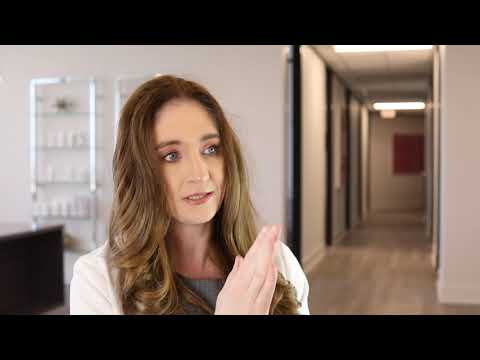To cover the pros and cons of deviated septum surgery, we should first define the term septum. Your septum is a structure that’s located on the inside of your nose that divides the two sides. It’s made of cartilage in front and bone in the back. When we say that it’s deviated, we mean it’s not exactly in the midline, but it’s bent over to one side or the other. This can occur for a number of different reasons.
For some people, they’re born with it, while for others it could be a result of the birthing process, where there was some trauma to the nose. Most people may have had multiple traumas to their noses over time. When you’re a kid, you fall, you bump your nose, you get up, and you keep going. You don’t even realize that it’s happened, but those micro traumas, over time, can make the cartilage curve. The result is that one side becomes narrower than the other because that’s the side that the septum is curved towards.
Usually the way you know if you have a deviated septum is that you don’t breathe well out of one side of your nose while the other side is okay. We all have breathing cycles where we breathe better out of one nostril for 20 minutes up to two hours, and then it’ll switch to the other nostril. This is normal. However, for those with a deviated septum, one side is always worse. So a lot of times when you go see your doctor, they’ll take a look inside your nose and may tell you that you have a deviated septum.
What are the pros of deviated septum surgery?
The pros of deviated septum surgery is that it is a very powerful way to improve your breathing. If you are one of those people that can’t breathe very well out of one side of your nose, you may really benefit from septal surgery or, what we call, a septoplasty.
It’s important to note that sometimes the side of your nose where the septum deviates away from is the side that can give you more trouble breathing even though it’s the bigger side. This is because you have structures in your nose called turbinates. These are hot dog shaped structures that are located on both sides of the interior of your nose and that heat and humidify the air. If you have a lot of allergies, or you live in a place like Houston where the air is maybe not so great, these turbinates can swell. Add a deviated septum to the mix and the turbinate on the bigger side will have, what we call, compensatory hypertrophy causing it to swell to take up that extra space. If we only fix the septum by moving it back to the midline, that turbinate will still stay bigger than the other side, causing breathing difficulties..
A lot of times I will do septo surgery, or Septoplasty, combined with turbinate surgery where I’ll move the septum back to the middle to give you more space on both sides to breathe while shrinking the turbinate.
What are the cons of deviated septum surgery?
The cons of deviated septum surgery is that fact that nasal obstruction is subjective. There are a lot of variables that go into how we breathe and what we consider obstructed breathing. The amount of deviation in the septum may not correlate to a patient’s level of nasal obstruction.
It’s very interesting from a scientific perspective, because it’s really hard to do a study and conclude that “if we fix the septum at this much, it improves your breathing this much” because there are other things at play in the nose, such as turbinate hypertrophy or allergies that alter how much air is passing through the nose. All of these things go into what creates your individual nasal obstruction or what makes you feel as if you’re not breathing well through your nose..
In most people with a very deviated septum, fixing the septum should fix the breathing problems. It may not fix it 100%, but we may get 70, 80, or 90 percent improvement to where you’re not noticing that one side is a lot worse than the other.
How bad does a deviated septum have to be for surgery?
It depends on the person. As I mentioned, everyone’s perception of nasal obstruction is a little different and for some people who may have just a millimeter or two of deviation, fixing it makes a world of difference. In other people, they may have a severely deviated septum, but when we move it pretty close to the midline (it’s hard to get it to 100%) they may feel they only got 50% improvement. This is because there are other things that contribute to nasal obstruction.
A narrow internal nasal valve could be adding to the difficulty in breathing through the nose. This valve is located where the bone ends and the cartilage begins. This little cartilage should be 10 to 15 degrees, but if it’s a few degrees narrower, you will feel the effect on your breathing. A lot of times when people come to see me they may have had their septum fixed and they’ve had their turbinates fixed as well, but they’re still having some nasal obstruction because that internal valve is narrow. That’s something that we can fix with grafting or take cartilage from one part of your nose and put it into another.
All in all, nasal obstruction is subjective, but in general, if one side of your nose is really hard to breathe out of and you look in there and can see the deviated cartilage, you should have some improvement with septal surgery.
Is deviated septum surgery worth it?
I would say yes, deviated septum surgery is worth it in the vast majority of cases. With your perception of nasal obstruction being different from everyone else’s, it’s hard to say 100 percent that fixing the septum is going to absolutely fix your nasal obstruction. However, it should make it a whole lot better if you do indeed have a deviated septum.
Being able to breathe through your nose is much more efficient than breathing through your mouth, so a lot of my patients will say, after they’ve had septal surgery, that they sleep better and exercise is much easier. They’re not out of breath quite so much and a successful surgery can positively affect a lot of other things that you didn’t even realize was caused by nasal obstruction.
If you have questions, please call or email any time. I help people like you every day and would love to talk.
Have questions? I’d love to help.
Call me at (281) 336-9300
Read More
Rhinoplasty Before & After Photos
When to Have Septoplasty with Rhinoplasty
Pros and Cons of Turbinate Reduction with Septoplasty
About Dr. Angela Sturm
Dr. Angela Sturm is a double-board certified facial plastic surgeon with certifications with the American Board of Otolaryngology – Head and Neck Surgery and the American Board of Facial Plastic Surgery. Dr. Sturm’s meticulous nature makes for exceptional results and satisfied patients. Dr. Sturm was named Texas Monthly’s Super Doctors Rising Star in 2016-2017, Texas Monthly’s Super Doctor in 2018-2019, H Texas Magazine’s Top Doc in 2013-2018, Top Doc by Houstonia magazine in 2016-2018, Houston Business Journal’s People on the Move and 40 under 40, Blazing Star Award by Texas Women’s Chamber of Commerce, Top Women in Business, one of the Top 30 Influential Women of Houston, Best Female Cosmetic Surgeon in Out Smart, and given the Patients’ Choice Award, On Time Doctor Award and Compassionate Doctor Award by Vitals.com.


